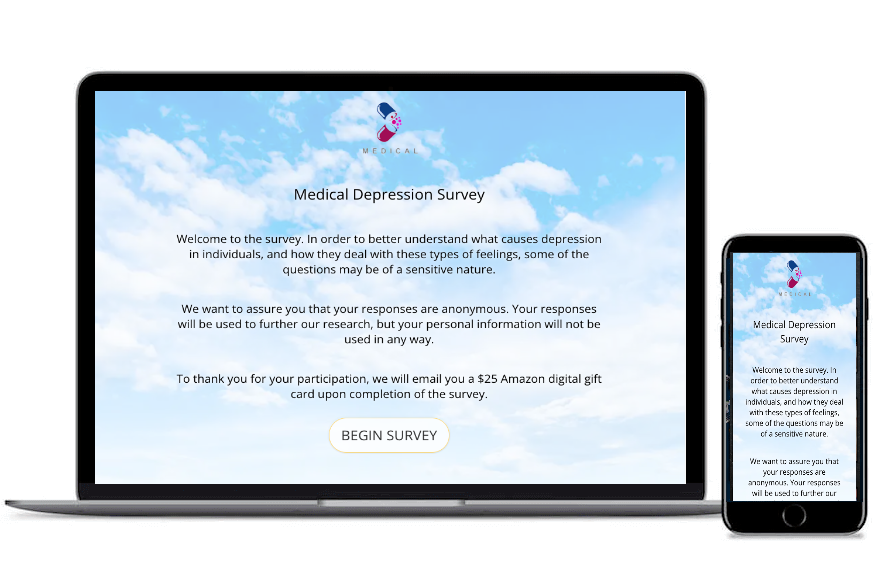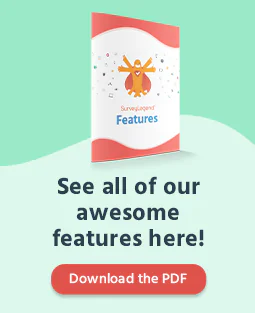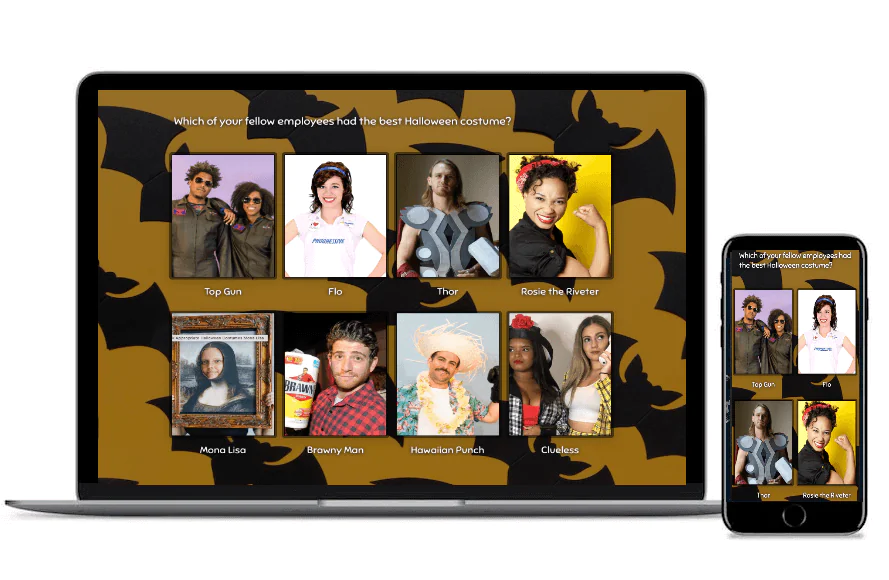They say you never get a second chance to make a good first impression. This adage holds true when conducting a survey as well. Making a good impression when conducting surveys will help ensure that participants complete the survey, which in turn increases your response rates and gives you more reliable data. The best way to make a good first impression is with a high quality survey welcome page. Think of this survey introduction as a virtual handshake between survey maker and survey taker!
Create your FREE survey and survey welcome page now!
10 Reasons to Use a Survey Welcome Pages
A survey welcome page plays a crucial role in any survey because it sets the tone for the entire survey. A good survey introduction provides an opportunity for the survey creator to communicate important information to the participants and help them understand the purpose of the survey, the type of questions they will be asked, and how their responses will be used, and so on. Here’s a look at the top benefits of including survey introductions, along with some examples of survey introductions and advice on how to write a survey introduction.
1. Establish Survey Legitimacy
A survey welcome page helps to establish the survey’s legitimacy. When people receive a survey invitation, they may be skeptical about its authenticity or concerned that it might be a scam (read more about survey scams here). Including an introduction and welcome page can help to alleviate these concerns and assure survey takers that the survey is legitimate. We recommend including information about the organization conducting the survey, its purpose, and the expected outcomes. This information can help build trust and encourage more people to participate in the survey.
2. Communicate the Survey’s Goals and Objectives
Survey participants want to know why you’re surveying them. Sometimes, it’s obvious (such as a customer satisfaction survey inquiring about a recent experience). Sometimes, it won’t be apparent to them why they’ve been singled out for a survey. When the reason for the survey is not obvious, be sure to include information about the purpose of the survey and what kind of information is being sought. Include an overview of the survey’s goals and objectives, as well as any specific information that survey takers should keep in mind as they respond. This can help to ensure that the survey takers provide more thoughtful and accurate responses.
3. Highlight Confidentiality or Anonymity
Is your survey confidential or anonymous? Use your survey welcome page to highlight this. If you’re not collecting or using personal data, this is likely to make respondents more willing to take your survey. This is especially true if your survey is covering a sensitive topic. However, if you are collecting or using personal data, this is the time to be honest about it and explain why and how this information will be used.
4. Establish Rapport with Participants
Remember that the survey introduction is a virtual handshake. Just like meeting someone in person, this handshake helps create rapport. Use your survey welcome page to thank survey takers for their participation and emphasize the importance of their responses. This can help to make survey takers feel valued and appreciated, which can encourage them to take the survey more seriously and provide more thoughtful responses.
5. Highlight Skip Options
If your survey includes sensitive questions, establishing rapport becomes even more important. Use the survey introduction to state that the survey may include questions of a sensitive nature, and let participants know that if any question makes them uncomfortable they have the option to skip it, versus dropping out altogether (if, of course, your survey allows participants to skip questions). Read more about asking sensitive questions on a survey.
6. Provide Context for the Survey Questions
Your survey welcome page should offer background information about the topic being studied and help survey takers understand why certain questions are being asked. This can help to ensure that survey takers are providing responses that are relevant to the topic, which can increase the survey’s overall accuracy and usefulness.
7. Establish Expectations for Participants
The survey introduction can include information about the length of the survey, the estimated time it will take to complete, how many questions there are, and any other requirements or expectations for participation. This can help to ensure that survey takers are prepared and know what to expect, which can increase their likelihood of completing the survey and providing high-quality responses.
If your survey is short and you say so upfront, someone who is busy and would otherwise reject the survey offer may give you their time with the understanding it won’t take long to complete. If your survey is long and will take some commitment, then you’re showing participants that you respect their time (this also weeds out those who might be prone to dropout during a long survey so that your results aren’t skewed.
8. Reduce Survey Bias
When survey takers are unclear about the purpose of the survey or what kind of information is being sought, they may provide biased or inaccurate responses. The introduction can help to clarify the purpose of the survey and provide context for the questions being asked, which can reduce the likelihood of survey bias and increase the overall accuracy of the survey.
9. Introduce Survey Incentives
If you’re offering survey incentives, you can use your survey welcome page to highlight this. Let participants know what their incentive is (gift card, discount code, etc.) and how they will receive it (a physical card mailed to their address, a discount code emailed after completion of the survey, and so on). Read more about survey incentive pros and cons.
10. Provide Deadlines and Contact Information
If your survey has a deadline, be sure to inform participants in order to create a sense of urgency. This is especially important for long surveys, which participants might start and come back to later to complete. If you’re open to taking questions from participants, you can also include a way for them to reach you for more information (phone, email, and so on).
How to Write a Survey Introduction
The reasons to create a welcome page should help guide you when it comes time to write one. However, there are a few other things to keep in mind. For example, the introduction for a scientific research survey will likely be very different from the introduction to a customer experience survey.
So, you want to keep your tone of voice in mind. That means that for surveys of a sensitive nature, you’ll want to take an empathetic tone. For surveys in which you’re “the boss,” i.e. employee and student surveys, you’ll want to “take charge.” On the other hand, for marketing surveys, use a tone similar to your normal brand voice (e.g., if your brand voice is quirky, be quirky in your introduction; if your brand is wholesome, be warm and thoughtful in your introduction).
Survey Welcome Page Examples
If your survey is conducted online, the welcome page serves as your survey landing page. It’s where participants “land” when they click your survey link. So, don’t overwhelm them with large blocks of text. Instead, get to the point and use visuals to further engage.
Survey Introduction Example 1
In the Survey Legend pet food example below, we quickly welcome participants and use a photo of pets to capture attention (what animal lover could say no to those faces?). This welcome page also includes social icons, so participants can share it with their social circle, further increasing your reach and response rate.

Survey Introduction Example 2
In the next example, for a pharmaceutical company studying depression, we inform participants that the survey will include some sensitive questions. We let them know why, highlight anonymity, and show our appreciation by offering an incentive. The survey uses relaxing imagery of a blue sky, and includes the company’s logo for legitimacy.
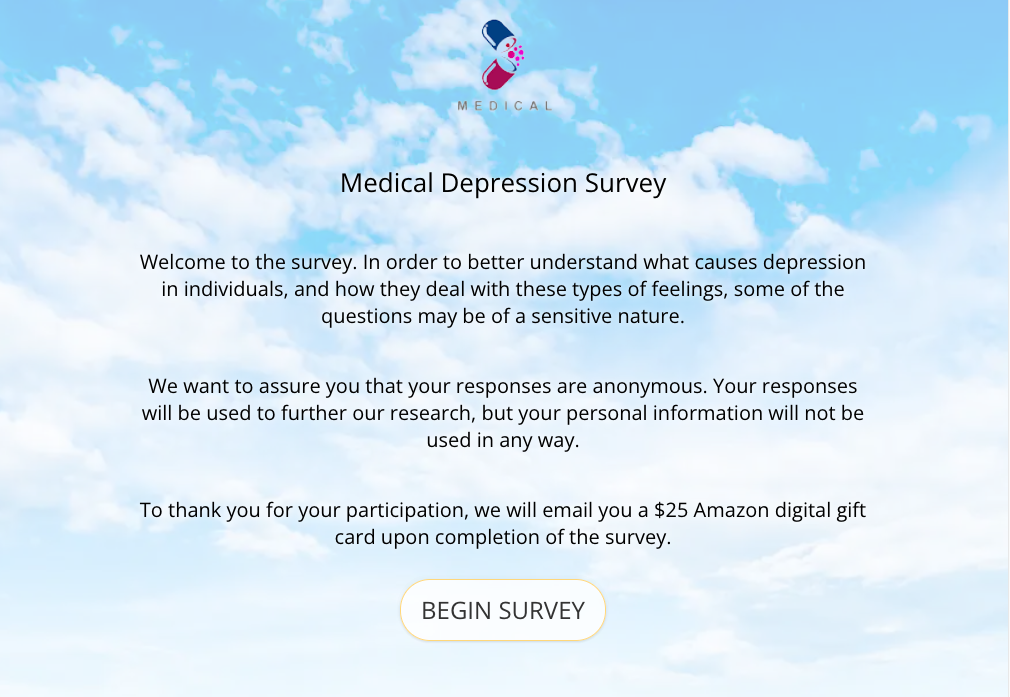
Survey Introduction Example 3
In our final survey introduction example, a college student is asking other students for help with an alcohol survey for a class research product. The survey creator explains this, and adds a winking nod to getting an A to encourage participation.

Survey Introduction Example 4
What can we say, we love animals. Here’s another for the fictitious Doggo.com, which includes branding at the top for legitimacy.
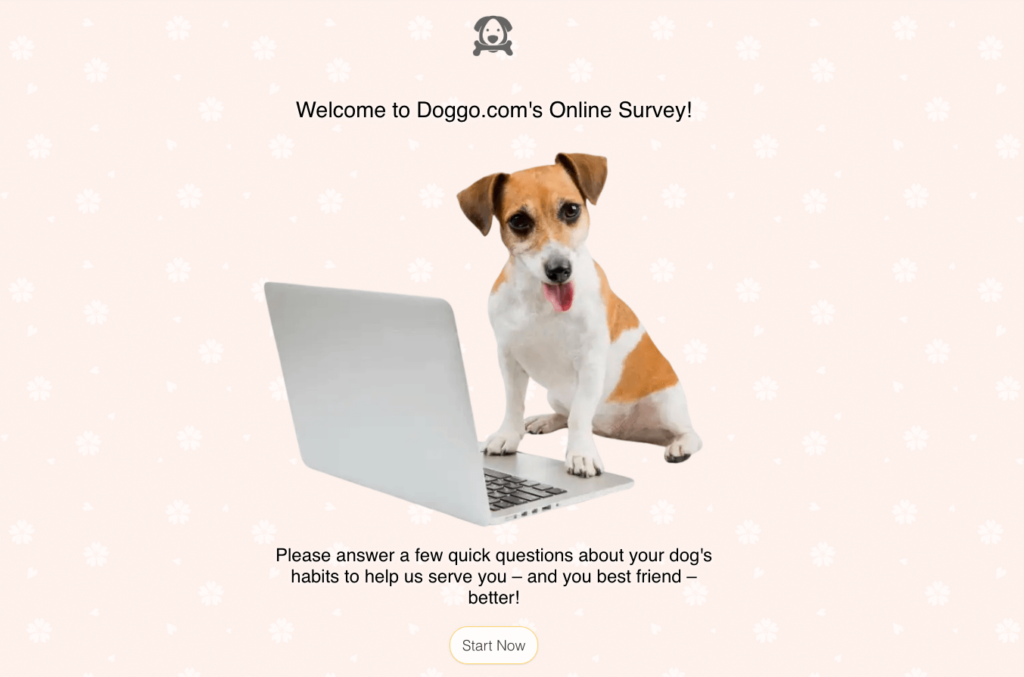
Conclusion
First impressions count. A firm handshake matters. Remember all this when creating your surrey welcome page. By following the suggestions in this blog, you can create a survey introduction that will encourage participation, increase response rates, and improve data quality. Start today with SurveyLegend’s free survey maker. It’s easy to use, our surveys are easy on the eyes, and our welcome pages are second-to-none!
Do you normally include a welcome page on your surveys? How about a survey thank you page at the end? (psst – SurveyLegend also allows you to create those!)
Create your FREE survey and survey welcome page now!
Frequently Asked Questions (FAQs)
A survey welcome page serves as an introduction to a survey. The welcome page can be used to establish validity, explain the purpose of the survey, discuss anonymity, highlight survey incentives, and more. Overall, the welcome page is designed to build rapport between survey maker and survey taker.
A survey welcome page encourages participation. This improves response rates which in turn leads to more reliable and valid data.
A survey thank you page compliments the survey welcome page but comes at the conclusion of the survey. It is designed to thank participants, inform them of next steps (such as a follow up survey, if applicable), and instruct them on how to receive their incentive if one is being offered.
